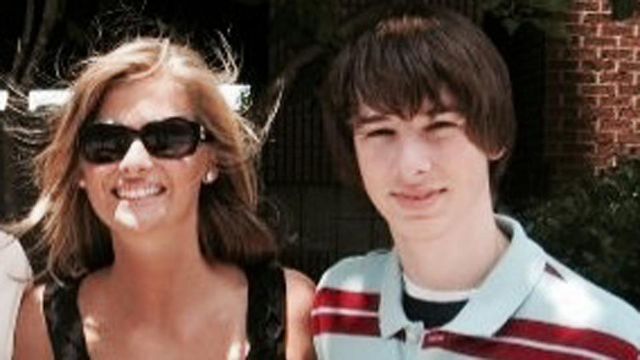Save A Life's message to struggling teens: It's OK to ask for help
Now in its fourth year, Save A Life is a local nonprofit group that's working with young people across the state to erase the stigma associated with mental health issues and spreading the message that it's OK for teens struggling with suicidal thoughts to ask for help.
Posted — Updated"I'm definitely doing this for my brother, in memory of him, but I'm also doing it for the other teens out there that feel as if they can't talk to anybody," Bennis, 23, said Tuesday. "I want to let them know that somebody is there for them and that they can talk about whatever may be going on."
Like Victoria Bennis, that statistic became personal for Melissa Walsh in September 2011 when her friend Shane Bremen, a 16-year-old junior at Cardinal Gibbons High School in Raleigh, took his own life.
"No one cares about suicide until someone close to you commits suicide," Walsh said. "You don't think about it until it happens to you or someone you know."
Walsh knew her friend had struggled with depression his freshman and sophomore years, but he had been getting treatment and seemed happier his junior year.
"Your first reaction is always disbelief. I didn't know what to think," Walsh said. "Then it started sinking in. I started feeling guilty. He was my friend. I felt like there was something I should have done."
Walsh and her classmates reached out to Save A Life in the wake of Shane's death to bring the topic of suicide to the forefront of students' minds and to help erase the stigma associated with mental health disorders.
"I think if people were more open to talking about it, suicide wouldn't be such an issue," she said. "If there wasn't such a stigma around mental illness and people weren't afraid to talk about it, things like suicide could be prevented."
At South Johnston High School in Four Oaks, freshman Rachel Sauls was inspired to start a suicide prevention program after a boy she knew sent out a mass text message to students telling them goodbye.
"It really broke my heart," she said. "I contacted him, and he was kind of confused that I did."
Not knowing how to help her friend, she reached out to Bennis to help her get her friend through the crisis.
Sauls is now on a campaign to educate every student and teacher at her school about the warning signs and risk factors associated with suicide.
That's what Save A Life is all about, Bennis says.
"(The group) is definitely spreading, and we've got great teenagers who are being proactive and wanting to participate," she said.
"It's about decreasing the stigma of suicide, and it's about letting teens know it's OK to ask for help and that they are all going through some of the similar issues," Bennis added.
• Credits
Copyright 2024 by Capitol Broadcasting Company. All rights reserved. This material may not be published, broadcast, rewritten or redistributed.





